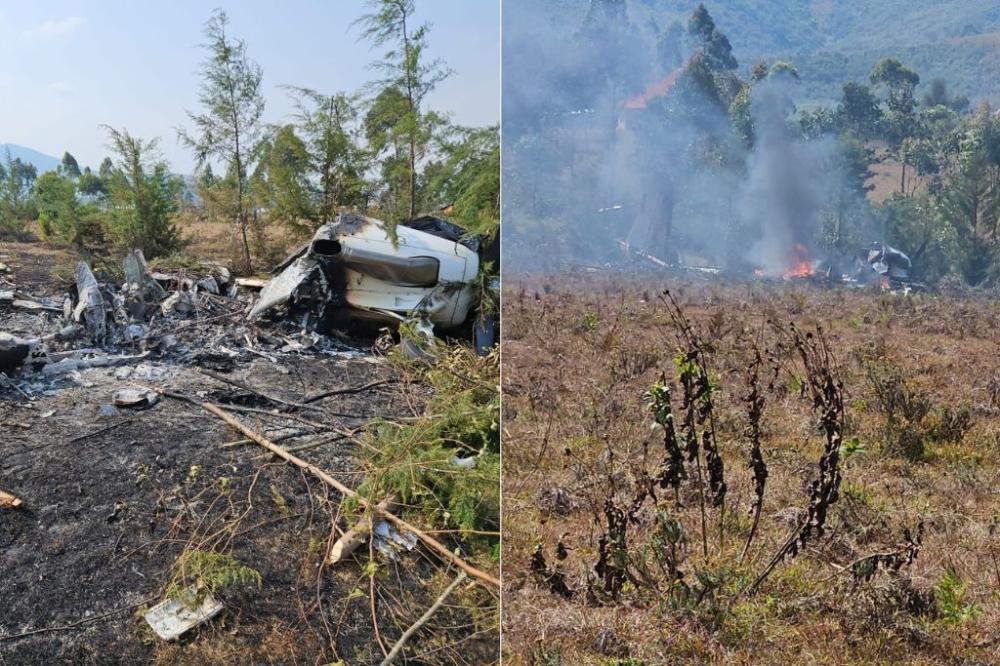Africa-Press – Rwanda. On the morning of June 30, 2025, as DR Congo marked 65 years of independence, a civilian aircraft delivering humanitarian aid to Minembwe was shot down by the very government responsible for protecting Congolese citizens.
The drone strike, carried out by the Congolese army (FARDC), injured several people, including a local chief and an eight-year-old child. Both were taken to the region’s under-equipped hospital – one that, like the rest of Minembwe, had never received state-supported aid until that flight. The government’s Independence Day gift to its most isolated citizens was fire from above. One has to wonder, does the Congolese state now confuse bombing humanitarian aircrafts for independence day fireworks?
The symbolism is almost too cruel to script: a civilian aircraft finally reaching a region besieged for years, delivering medicine and relief to a population starved by ethnic persecution, only to be destroyed by its own state. The strike came three days after DR Congo signed the Washington peace agreement with Rwanda, a supposed turning point in efforts to resolve the regional crisis. Unfortunately, this attack begs to question if peace is even a goal for President Felix Tshisekedi.
The FARDC publicly took responsibility, claiming the aircraft was unidentified and flying over a conflict zone. In doing so, the regime left no doubt: this was not a mistake, it was policy.
Minembwe has long been a scar on the conscience of the Congolese state. For years, its people, mostly Banyamulenge, have lived under siege, surrounded by hostile militia, cut off from markets, and abandoned by humanitarian agencies unwilling to brave the politics of access. Their survival has rested on self-reliance and invisible suffering.
The June 30 flight represented more than supplies – it was a lifeline, a rare breach in the wall of strategic abandonment. Destroying it wasn’t just a military act. It was a message from the state army: you will not survive on our watch.
The Banyamulenge have long faced ethnic persecution at the hands of their own government and its affiliated militias. In response, they formed a self-defense force known as ‘Twirwaneho.’ That name alone speaks volumes about the betrayal they’ve endured, forced to fight for themselves. The drone strike didn’t target Twirwaneho or AFC/M23. It targeted the survival of Banyamulenge civilains.
The drones raise an urgent question: what kind of state prioritizes military optics over its starving civilians? What kind of independence is celebrated by turning drones on your own people?
This is what scorched earth looks like in 2025. Not just razed villages, but deliberately severed lifelines. Not just silence, but sabotage. All of it under the shadow of a peace agreement that, days earlier, had promised a new direction. Instead, the direction is clearer than ever. The same actors remain in control, the same genocidaires remain armed, and the same people – innocent, unarmed, and unrecognized – forced to rely only on themselves for rescue.
What the international community chooses to do next will matter. What it has already failed to do speaks even louder. No meaningful condemnation has followed. No investigation, no sanction, no visible outcry. Just silence – again. The same silence that allowed Minembwe to rot for years. The same silence that lets Tshisekedi’s regime bomb civilians and call it sovereignty.
This is not just a humanitarian crisis. It is a war crime. It is scorched earth disguised as statecraft. Until the world acknowledges it as such, this will not be the last drone. It will be the first of many.
For More News And Analysis About Rwanda Follow Africa-Press






